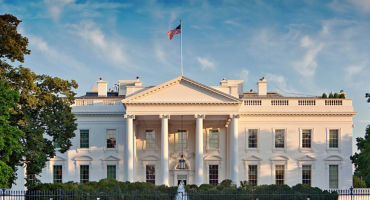For corporate America, reduced investment spending ahead
Some of America’s largest companies have announced reductions in technology spending. This has long been an area of steady growth and plans were accelerated during the pandemic, but we’re now seeing companies pull back to align with the true underlying trends in demand. In addition, corporate confidence is low and the recent tightening of bank lending standards for commercial and industrial loans, as well as commercial real estate, suggests further slowing ahead.
At the same time, funding from the CHIPS Act, the infrastructure bill, and the Inflation Reduction Act could help keep some spending plans on track. The war in Ukraine has also boosted demand for US defense spending and exports in energy and food.
On the external front, it is possible that as the Fed’s tightening cycle winds down, the US dollar will reach a peak in 2023 and begin to weaken, bringing a revival in export growth. Pent-up demand overseas, especially in emerging markets coming out of COVID lockdowns, could offer another source of growth.
A closer look at the employment picture
Collectively, this outlook portends weakness in employment growth next year. The post-COVID snapback in employment was driven by large companies hiring aggressively as the economy reopened, and the subsequent labor shortages spurred a reluctance to let workers go quickly when business conditions deteriorate. In the meantime, small companies have had tremendous difficulty finding workers, leaving job openings at an elevated level despite the softening economy. But with some large companies announcing hiring freezes and cutbacks, small companies stand to benefit.
Improving productivity could be a bright spot in 2023, with new hires hitting their stride and contributing to efficiency gains while companies prune excess labor to reflect demand conditions.
Deflated asset values and the balance-sheet impact
After years of easy money, the rapid rise in interest rates in 2022 deflated asset values across the equity, fixed income, digital currency, and real estate markets. It is worth noting that, relative to the 2008 financial crisis, these declines came after a prolonged period of rising prices that left many households and companies with a cushion. In aggregate, household and corporate balance sheets remain in strong shape as debt has been termed out.























Monthly Market Review — November 2025
A monthly update on equity, fixed income, currency, and commodity markets.
By